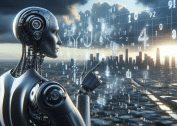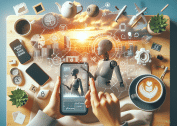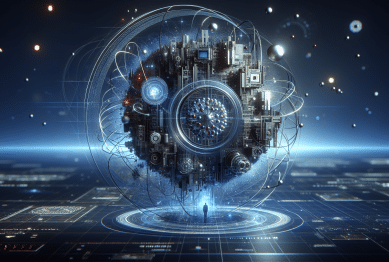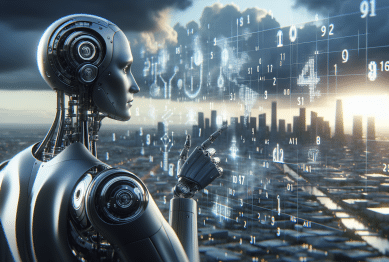Curious about how artificial intelligence is affecting everyday life? This guide explores practical ways AI touches daily routines, from voice assistance to smarter healthcare and safer transportation. Dive in to learn about the technology shaping your world in ways you might not even notice.
AI in Your Pocket: Digital Assistants and Communication
Modern smartphones have become more than communication devices. Today, digital assistants such as Siri, Google Assistant, and Alexa exemplify how artificial intelligence simplifies interactions and boosts productivity for individuals and families. From scheduling reminders to searching the web, these AI-powered tools adapt to the way people speak and learn user preferences over time, making each device feel more intuitive and personalized. This intelligent language processing not only enhances convenience but has also transformed expectations for modern customer service and accessibility.
Natural language processing is a cornerstone in the evolution of digital assistants. It allows users to interact with their devices conversationally, no longer bound to pressing buttons or typing. The voice commands handled by virtual assistants are powered by sophisticated algorithms that recognize intent, context, and even mood. Daily communication is evolving, with AI bridging gaps for differently-abled individuals by enabling voice-to-text, real-time translation, and adaptive messaging. For those curious about smart technology trends, the intersection of communication and AI is only expanding.
Personalizing communication is an ongoing journey in artificial intelligence research. AI systems analyze usage patterns to anticipate needs, such as auto-suggesting calendar events, checking the weather, or sending location updates on the go. These features offer a seamless experience where manual input becomes optional. As AI communication tools are integrated across apps and devices, their impact on productivity, accessibility, and daily efficiency continues to deepen, showing how artificial intelligence is now a regular companion for millions.
Transforming Home Life: Smart Devices and Automation
Smart home technology showcases some of the most accessible uses of artificial intelligence. From learning thermostats that predict your preferred climate to voice-controlled lights and robot vacuums, AI transforms living spaces into intuitive environments. Devices collect and interpret household data to suggest energy-saving schedules, customize lighting, or optimize appliance usage, while adapting daily to routines. The aim is to create a home that feels both more comfortable and efficient for every user, without demanding constant oversight.
Security is another area where AI shines at home. Modern security systems feature cameras and sensors powered by machine learning algorithms. They recognize unfamiliar faces, detect unusual movement, and instantly alert homeowners to potential risks. Some systems even distinguish between people, pets, and background noise, reducing false alarms and saving time. Home automation is moving beyond convenience, offering increased peace of mind and valuable real-time information to household members, regardless of their physical location.
Artificial intelligence is changing entertainment and learning at home too. Recommendation engines in streaming services analyze viewing and listening habits, suggesting movies, shows, or playlists suited to individual tastes. Kids’ educational apps adjust content difficulty automatically, keeping young minds engaged at the perfect level. Across every age group, AI helps build personalized experiences while protecting users through content moderation and age-appropriate filters, making technology safer and more enjoyable at home.
Improving Healthcare with Smarter Technology
The effects of artificial intelligence on healthcare are becoming increasingly visible. Hospitals and clinics adopt AI-driven diagnostics, predictive analytics, and robotic surgery tools to streamline operations and improve outcomes. Algorithms analyze historical patient data to help medical professionals detect patterns, predict disease progression, and recommend personalized treatments. This use of AI improves efficiency, allowing healthcare workers to spend more time with patients and less time on paperwork or repetitive tasks.
Wearable health devices, such as smartwatches and fitness trackers, rely on AI to monitor vital signs continuously. They interpret heart rate, sleep cycles, and physical activity, alerting users to irregular patterns or potential health risks. Some devices are connected with healthcare providers, enabling early intervention and more timely guidance. As artificial intelligence models evolve, the capacity for remote monitoring and early detection of disease becomes increasingly accessible to larger populations, promoting public health.
In research, AI accelerates drug discovery and medical imaging analysis. Machines quickly scan millions of images, identifying potential anomalies that physicians may review. AI-assisted clinical trials manage huge volumes of information, streamlining the search for effective medications and treatments. The integration of artificial intelligence in medicine supports safer, faster, and more informed decision-making, suggesting promising directions for future patient care and diagnostics.
Safer Roads: How AI Shapes Transportation
Safety and efficiency are critical in the world of transportation, and artificial intelligence is playing a dynamic role. Advanced driver-assistance systems (ADAS) like automatic emergency braking, adaptive cruise control, and lane-keeping features rely on AI-powered sensors and real-time data processing. These smart systems analyze traffic patterns, detect obstacles, and respond faster than human reflexes, helping to prevent accidents and keep occupants safe under diverse driving conditions.
Self-driving vehicles and rideshare platforms use AI to plan routes, manage fleets, and optimize rides for cost and fuel efficiency. By evaluating traffic, road conditions, and passenger preferences, these platforms help minimize delays and reduce emissions. For cities grappling with congestion or air quality, artificial intelligence offers promising solutions for smarter urban mobility. Meanwhile, logistics and delivery networks leverage AI to predict demand, optimize schedules, and ensure packages arrive promptly, even during high-volume periods.
The future of public transportation is increasingly dependent on artificial intelligence. Transit agencies analyze data to adjust schedules in real time or reroute vehicles around obstructions. Predictive maintenance uses AI to monitor the condition of trains, buses, and infrastructure, alerting teams before breakdowns occur. All these improvements work quietly behind the scenes, raising standards of safety and reliability for commuters worldwide while fostering a more sustainable environment.
AI and Everyday Finance: Smarter Spending and Saving
Money management is becoming more approachable with artificial intelligence. Banking apps and online platforms use algorithms to categorize spending, suggest savings strategies, and even offer budgeting advice tailored to individual habits. These smart financial tools monitor transactions for suspicious activity, providing an extra layer of protection against fraud. With just a few taps, users can receive real-time insights and notifications, making financial decision-making more transparent and accessible.
Automated investing platforms, sometimes called robo-advisors, harness AI to balance portfolios and manage risk based on user-set preferences. These platforms interpret financial goals and market conditions, performing trades or rebalancing accounts without requiring manual input. Artificial intelligence enables investors with any level of experience to benefit from tools once exclusive to professionals. The result is that personalized financial advice is reaching a broader audience than ever before.
For businesses, AI streamlines financial operations by managing invoices, predicting cash flow, and spotting trends in sales data. By automating repetitive tasks, companies can focus more attention on growth and innovation. Small businesses especially benefit, as AI-powered systems lower administrative burdens and minimize costly errors. With rapid advances in technology, the role of AI in personal and business finance is expected to expand and further simplify everyday money matters.
The Invisible Touch: AI Behind the Scenes in Daily Life
Artificial intelligence often operates out of sight, yet its influence reaches almost every aspect of daily life. Email spam filters, fraud detection in credit cards, online shopping recommendations, and personalized content feeds rely on machine learning and data analysis to tailor experiences for individual users. AI sifts through huge volumes of information, identifying trends and highlighting what matters most, all while operating quietly in the background.
Supply chain logistics, manufacturing, and customer support are increasingly managed by artificial intelligence. Automated warehouses use robots powered by AI to pick and pack goods efficiently, reducing delivery times and operational costs. Chatbots and virtual support agents resolve common queries, allowing human staff to focus on complex issues. This integration reduces wait times, error rates, and stress, benefiting both companies and their customers with invisible, reliable support.
Artificial intelligence plays a role in online safety as well, flagging potentially harmful content and protecting privacy through intelligent monitoring. Cybersecurity systems learn to adapt to new threats by analyzing patterns of attacks. These advanced AI systems help ensure users’ personal information remains secure, demonstrating how machine learning operates silently to protect and empower digital experiences every day.
References
1. National Institute of Standards and Technology. (n.d.). Artificial Intelligence. Retrieved from https://www.nist.gov/artificial-intelligence
2. Mayo Clinic. (n.d.). Artificial Intelligence in Healthcare. Retrieved from https://www.mayoclinic.org/artificial-intelligence-healthcare
3. Stanford University. (n.d.). AI Index Report. Retrieved from https://aiindex.stanford.edu/report/
4. Consumer Reports. (n.d.). Smart Home Guide. Retrieved from https://www.consumerreports.org/smart-home
5. Brookings Institution. (n.d.). AI and the Future of Work. Retrieved from https://www.brookings.edu/ai-future-work
6. U.S. Department of Transportation. (n.d.). How Artificial Intelligence is Transforming Transportation. Retrieved from https://www.transportation.gov/artificial-intelligence-transportation









